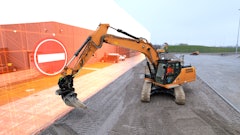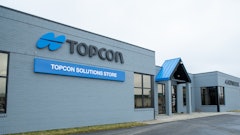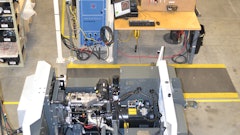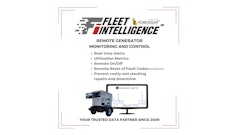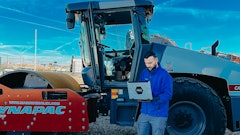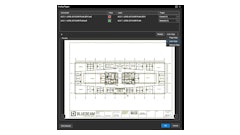
For companies that want to boost productivity, efficiency and safety – and, ultimately, their bottom line – increasing operational visibility is key. Fleet management solutions available today, especially when integrated into a larger technology environment, can deliver an unprecedented level of visibility, empowering businesses with the actionable insights they need to gain a competitive advantage – often quickly.
In fact, a recent study found that 45% of 1,200 surveyed U.S. fleet managers, executives, and other mobile-business professionals achieved positive ROI in 11 months or less on their fleet management solutions. Of those, 22% reported positive ROI in fewer than three months. Results like these highlight the benefits that increased visibility via fleet management technology can deliver.
When construction and ready-mix concrete businesses embrace these technologies such as e-ticketing capabilities, automatic job statusing, and system integrations, these businesses are ultimately empowered to increase productivity while also improving upon the bottom line.
E-Ticketing and Automatic Job Statusing
Electronic ticketing (or e-ticketing) is a huge leap forward for construction businesses. Much more than just an electronic replica of a paper job ticket, an e-ticket contains all the real-time information that drivers and the back office need to ensure jobs are completed correctly and efficiently.
A major limitation associated with paper ticketing systems is the inability to make dynamic updates. If something related to a job changes, drivers must be contacted by radio or telephone – an inefficient process that can lead to costly errors and frustrated drivers. E-ticketing eliminates such issues by providing updates in real time – a level of visibility that ensures that the right parties have the right information when they need it to make better decisions.
In addition to increased efficiency, according to the Federal Highway Administration, e-ticketing also improves safety by reducing drivers’ exposure to traffic and construction equipment; streamlines operations and saves time; and provides quality, standardized documentation that can be easily retrieved and referenced to make better future decisions.
While e-ticketing is key for optimization, automatic job statusing gives fleet managers full visibility, allowing them to better allocate resources and ensure that concrete is delivered to a site on time. Knowing how many trucks are ticketed, en route, on site, pouring and traveling back to plant gives key supply chain personnel the information they need to make sure jobs are done properly.
With automatic job statusing, drivers also benefit by no longer needing to worry about updating paper tickets or calling into dispatch to tell them their status. Instead, they can focus on the important job of getting to and from work sites efficiently and safely, which is particularly important with large, complex jobs, where continuous deliveries are required.
Unsung Hero of Fleet Technology: System Integrations
The power of system integrations, especially in the construction and ready mix industries, cannot be underestimated. For example, when it comes to ready mix, precision is crucial and IoT technology paired with sensors lets drivers and the back office easily track drum rotations and moisture levels, increasing productivity, lowering the chance for human error, and reducing administrative burden by providing accurate digital records.
A system that integrates and connects with existing software and hardware is key to ensuring that jobs are completed correctly and efficiently. Furthermore, having a telematics partner that integrates with software and SaaS solution providers results in better visibility, efficiency and safety.
IoT solutions with open APIs can both increase efficiencies and improve a company’s bottom line. By providing an accessible, simplified and unified IoT platform and partnering with a provider who offers these capabilities, fleet managers can free up drivers’ time and help them get the job done. With the use of integration-friendly technology, construction fleets can go a long way toward future-proofing their business, allowing them to evolve as the technology does.
The bottom line is when fleet managers utilize technology such as e-ticketing and automatic job statusing, they are primed to increase productivity, efficiency, and revenue. Furthermore, when construction fleets take that a step further and combine integration capabilities with the power of fleet technology, it leads to a safer work environment, optimized efficiencies and, ultimately, an improved bottom line.









